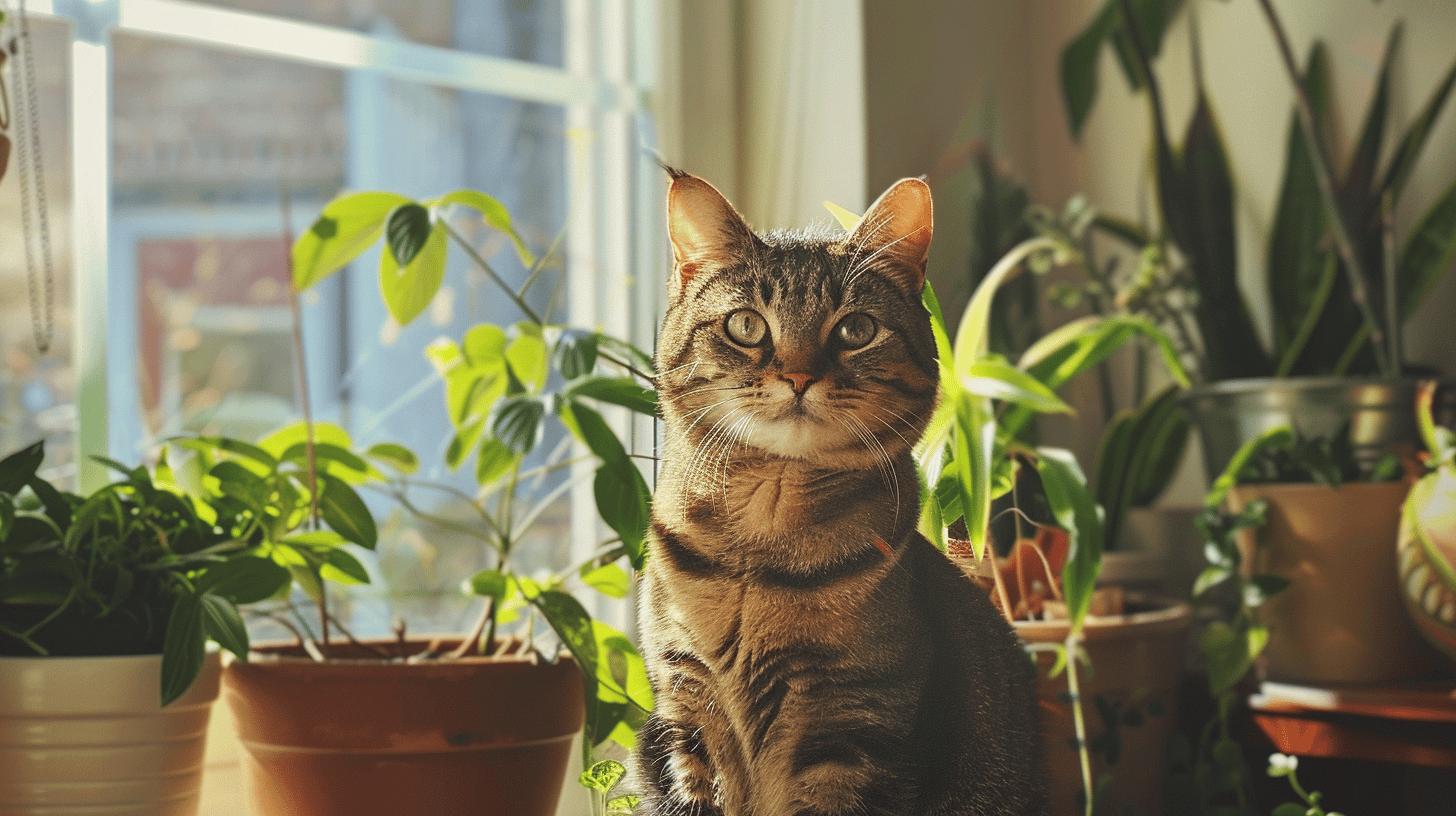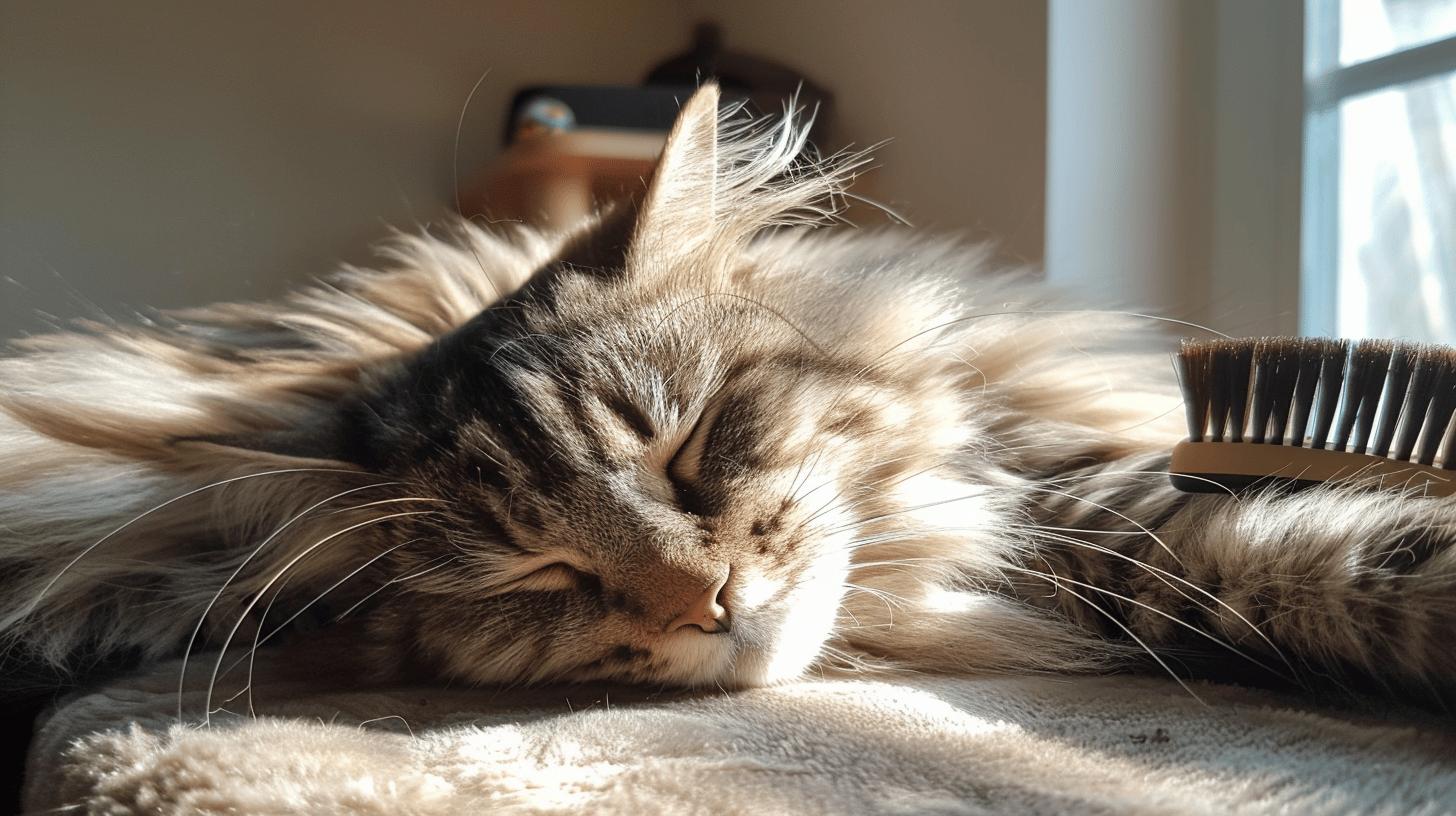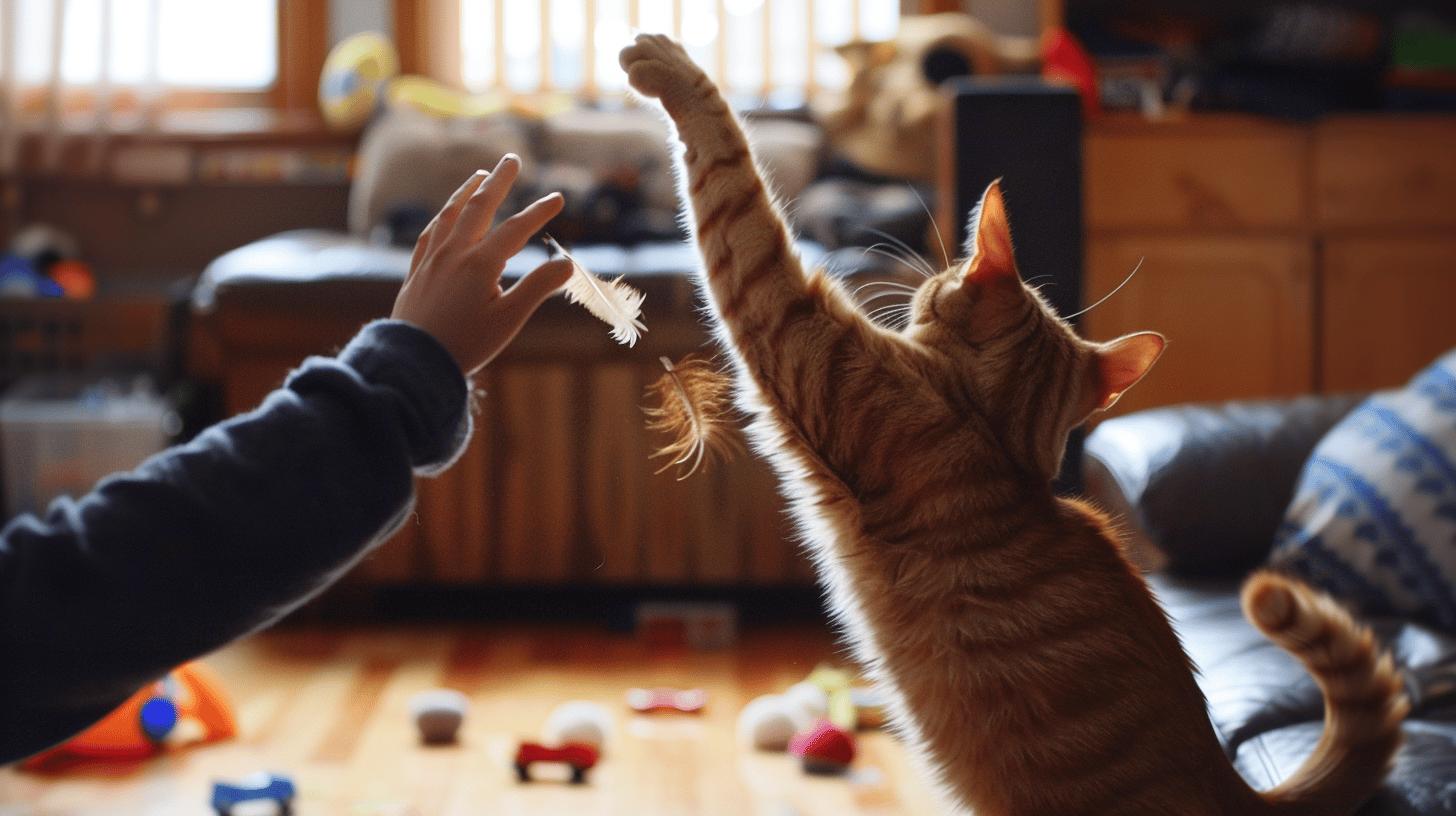Are you ready to welcome a feline friend into your home but don't know where to start? Becoming a first-time cat owner is exciting yet challenging, with so many things to consider. From understanding your cat's behavior to setting up a cat-friendly environment, proper preparation is crucial. In this guide, Heads Up Mom provides essential cat parenting tips to help you navigate your new journey. Learn practical advice on creating a checklist, selecting must-have items, and avoiding common mistakes to ensure your new cat feels right at home.
Essential Cat Parenting Tips for First-Time Owners
Creating a checklist of essential items is crucial for first-time cat owners. This preparation ensures you have everything needed to make your new feline friend comfortable and happy from day one.
Here are six must-have products for new cat owners:
- Food and Water Bowls: Choose sturdy, easy-to-clean bowls to ensure your cat stays hydrated and well-fed.
- Litter Box: Opt for a spacious litter box and place it in a quiet, accessible location.
- Scratching Posts: Provide multiple scratching posts to satisfy your cat's natural urge to scratch and save your furniture.
- Toys: Stock up on a variety of toys to keep your cat entertained and mentally stimulated.
- Cat Bed: Invest in a comfortable bed where your cat can rest and feel secure.
- Cat Carrier: Essential for vet visits and safe travel, a cat carrier provides a secure way to transport your pet.
Understanding cat behavior and basic needs is another essential aspect of cat parenting. Cats communicate through body language and vocalizations. Recognizing these signals can help you understand their emotions and health needs.
Setting up a cat-friendly home environment involves more than just providing the essentials. Create safe spaces where your cat can retreat and feel secure. Vertical territory, like cat trees or shelves, can give your cat a sense of control and comfort.
Practical advice on avoiding common mistakes includes ensuring that litter boxes are clean and accessible. Avoid placing food and water bowls near the litter box to prevent contamination. Regularly inspect toys for wear and tear to avoid any potential hazards.
By following these tips, first-time cat owners can create a welcoming and safe environment for their new feline companion.
Understanding Cat Behavior and Communication

Understanding cat behavior is essential for first-time cat parents. Cats communicate through body language, vocalizations, and behavior. Recognizing these signals can help you understand their emotions and health needs.
Basics of Cat Body Language and Vocalizations
Cats use their tails, ears, and vocal sounds to express themselves. Here are some key signs to watch for:
- Tail Position: A high tail usually means your cat is happy and confident. A low or tucked tail can indicate fear or submission.
- Ear Orientation: Forward-facing ears typically show interest or happiness. Flattened ears can signal fear, anger, or annoyance.
- Vocal Sounds: Purring often indicates contentment, while hissing or growling usually means your cat feels threatened or scared.
Common Behaviors and Their Meanings
Certain behaviors can provide insights into your cat's emotional state:
- Kneading: This is a sign of comfort and affection, often linked to kittenhood when they knead their mother's belly.
- Slow Blinking: A slow blink is a sign of trust and affection. Try slow-blinking back to your cat to show you feel the same way.
- Hiding: If your cat hides frequently, it may be stressed or unwell. Ensure they have a safe, quiet space to retreat to.
Creating a Stress-Free Environment
Providing a safe and predictable environment can reduce stress and improve your cat's well-being. Here are some tips:
- Safe Spaces: Create areas where your cat can hide and feel secure, like a cozy bed or a designated quiet room.
- Vertical Territory: Cat trees or shelves allow cats to climb and observe their surroundings, which can make them feel more in control.
- Routine: Maintain a consistent daily routine for feeding, playing, and sleeping to help your cat feel secure.
By understanding and responding to your cat's behavior and communication, you can create a harmonious and stress-free environment for your feline friend.
Feeding Your Cat: Guidelines and Best Practices
Quality cat food is essential for maintaining your cat's health. Selecting the right food can make a significant difference in your cat's well-being and longevity.
Importance of Selecting Quality Cat Food
High-quality cat food provides balanced nutrition, supporting your cat's overall health. Poor-quality food can lead to deficiencies and health issues. Always look for food that lists meat as the first ingredient and avoids fillers like corn and soy.
Factors to Consider When Choosing Cat Food
When selecting cat food, consider the following factors:
- Age: Kittens, adult cats, and senior cats have different nutritional needs. Choose food formulated for your cat's life stage.
- Activity Level: Active cats may require more calories and protein than less active cats.
- Dietary Needs: If your cat has specific health conditions, like allergies or kidney disease, select food tailored to those needs.
- Ingredients: Look for high-quality ingredients, such as named meat sources and whole grains. Avoid foods with artificial additives.
- Brand Reputation: Research brands to ensure they have a good reputation for quality and safety.
Portion Control and Feeding Schedules
Proper portion control is crucial to avoid overfeeding, which can lead to obesity. Follow these guidelines:
- Read Labels: Follow the feeding recommendations on the cat food packaging based on your cat's weight and age.
- Measure Portions: Use a measuring cup to ensure accurate portions.
- Feeding Frequency: Kittens may need to be fed multiple times a day, while adult cats typically do well with two meals per day.
- Adjust as Needed: Monitor your cat's weight and adjust portions if they start gaining or losing weight.
Potential Costs Associated with Feeding a Cat
The cost of cat food can vary widely. While high-quality food may cost more upfront, it can save you money in the long run by preventing health issues. Budget for the best food you can afford to keep your cat healthy and happy.
By following these guidelines, you can ensure that your cat receives the nutrition they need to thrive.
Grooming and Health Care for Cats

Regular grooming is essential for maintaining a cat's coat and reducing shedding. It involves brushing, bathing, and checking for any signs of health issues. Grooming helps to keep your cat clean and can also be a bonding activity.
Key Grooming Tasks
Here are four key grooming tasks to include in your routine:
- Brushing: Brush your cat's fur regularly to remove loose hair and prevent mats. Long-haired cats may need daily brushing, while short-haired breeds can be brushed weekly.
- Bathing: Although not always necessary, occasional baths can help keep your cat's coat clean and free of dirt. Use a cat-specific shampoo and ensure the water is lukewarm.
- Nail Trimming: Trim your cat's nails every few weeks to prevent overgrowth and reduce the risk of scratches. Use cat nail clippers and be careful not to cut too close to the quick.
- Ear Cleaning: Check your cat's ears for dirt, wax, or signs of infection. Clean gently with a damp cotton ball if needed, but avoid inserting anything into the ear canal.
Dental Care
Dental care is vital for preventing oral diseases. Cats can develop plaque and tartar, leading to gum disease and tooth loss. Regular brushing of your cat's teeth with a cat-specific toothbrush and toothpaste can help maintain oral health. Dental treats and toys can also aid in keeping teeth clean.
Flea and Tick Prevention
Preventative measures for fleas and ticks are crucial for both indoor and outdoor cats. Use veterinarian-recommended flea and tick treatments, which can come in the form of topical applications, oral medications, or collars. Regularly check your cat for signs of fleas or ticks, especially if they spend time outside.
Regular Vet Visits and Vaccinations
Regular vet visits are essential for your cat's overall health. Annual check-ups can help detect and address health issues early. Ensure your cat is up-to-date on vaccinations to protect against common diseases. Discuss with your vet any specific health concerns or preventative measures that may be needed for your cat's lifestyle.
By following these grooming and health care tips, you can help ensure your cat remains healthy and happy.
Creating a Cat-Friendly Home Environment
A cat-friendly home should include safe spaces, vertical territory, and enrichment activities. Ensuring your environment meets these needs will help your cat feel secure, engaged, and happy.
Safe Spaces and Vertical Territory
Safe spaces allow your cat to retreat and feel secure, reducing stress. Vertical territory, like cat trees or shelves, can give your cat a sense of control and comfort. Cats enjoy observing their surroundings from elevated positions, which can make them feel more secure.
Essential Cat-Proofing Tasks
Here are five essential tasks to cat-proof your home:
- Remove Hazards: Eliminate any small objects or toxic substances that your cat could ingest. Secure electrical cords and keep harmful chemicals out of reach.
- Secure Windows: Install sturdy screens on windows to prevent your cat from falling or escaping. Ensure that all screens are secure and free of holes.
- Provide Scratching Alternatives: Place multiple scratching posts around your home to prevent your cat from damaging furniture. Choose posts that are stable and made of durable materials.
- Hide Breakables: Keep fragile items in secure locations where your cat cannot knock them over. Use double-sided tape to deter your cat from climbing on shelves and countertops.
- Cover Trash Bins: Use trash cans with secure lids to prevent your cat from rummaging through and potentially ingesting harmful items.
Safety Tips
Securing windows and choosing safe plants are essential for cat safety. Always use screens on windows to prevent falls and escape. When selecting plants, opt for non-toxic varieties to avoid accidental poisoning. Some safe plant options include spider plants, Boston ferns, and cat grass.
Enrichment Activities
Enrichment activities keep cats entertained and mentally stimulated, preventing boredom and misbehavior. Consider the following activities:
- Interactive Toys: Use toys that encourage active play, such as feather wands and laser pointers. Rotate toys regularly to keep your cat interested.
- Puzzle Feeders: Provide puzzle feeders to challenge your cat's mind and slow down their eating. These feeders can reduce boredom and promote healthy eating habits.
- Training Sessions: Engage in short training sessions using positive reinforcement. Teach your cat tricks or commands to keep their mind active.
- Climbing Structures: Install cat trees or shelves to provide vertical climbing opportunities. These structures can help your cat exercise and explore their environment.
- Window Perches: Create window perches for your cat to watch the outside world. This can provide entertainment and mental stimulation.
By following these tips, you can create a safe, engaging, and cat-friendly environment that meets your feline friend's needs.
Emotional Bonding and Playtime with Your Cat

Bonding with your cat can be achieved through regular playtime and positive interactions. Building a strong bond leads to a happier and healthier cat. Different cats have different preferences for toys and activities, so it's important to observe what your cat enjoys most.
Importance of Regular Playtime and Positive Interactions
Regular playtime is crucial for your cat's physical and mental health. It helps burn off excess energy, reduces stress, and encourages natural hunting behaviors. Positive interactions, such as gentle petting and talking softly to your cat, can strengthen your bond.
Popular Cat Toys and Activities
Here are four popular toys and activities that can enhance your bonding experience:
- Feather Wands: These toys mimic the movement of birds, appealing to your cat's hunting instincts.
- Laser Pointers: While using a laser pointer, always finish the session with a tangible toy to prevent frustration.
- Interactive Toys: Toys that move or make noise can keep your cat entertained for hours.
- Catnip Toys: Many cats enjoy the stimulating effects of catnip, which can make playtime more exciting.
Enrichment Activities to Keep Your Cat Engaged
Enrichment activities are key to keeping your cat mentally stimulated and preventing boredom. Consider incorporating the following ideas:
- Puzzle Feeders: These feeders challenge your cat's mind and slow down their eating, promoting healthier habits.
- Training Sessions: Short training sessions using positive reinforcement can teach your cat new tricks and commands.
- Climbing Structures: Cat trees and shelves provide vertical space for climbing and exploring.
- Window Perches: Create perches near windows for your cat to watch the outside world, providing entertainment and mental stimulation.
Benefits of Building a Strong Bond
A strong bond benefits both the cat and the owner. It leads to a more trusting and affectionate relationship, making your cat feel secure and loved. This connection can also make handling and care tasks easier, as your cat will be more cooperative and less stressed.
By incorporating these tips, you can create a fulfilling and joyful relationship with your feline friend.
Training and Behavior Management for Cats
Training a cat involves employing positive reinforcement and patience. Unlike dogs, cats respond better to rewards than to punishment, making positive reinforcement a key principle.
Principles of Positive Reinforcement
Positive reinforcement means rewarding your cat for desired behaviors. This can include treats, praise, or playtime. For example, if you want your cat to use a scratching post instead of furniture, reward them every time they use the post.
Common Behavioral Problems and Solutions
Here are three common behavioral problems and their solutions:
- Scratching Furniture: Provide multiple scratching posts around your home. Make them appealing by using catnip or placing them near favorite scratching spots.
- Biting: Avoid using your hands as toys. Redirect biting behavior toward appropriate toys and reinforce gentle play.
- Litter Box Issues: Ensure the litter box is clean and accessible. If problems persist, try different types of litter or consult a vet to rule out medical issues.
Effective Discipline Techniques
Effective discipline focuses on redirecting unwanted behavior rather than punishment. For example, if your cat jumps on the counter, gently remove them and place them on the floor. Then, reward them when they stay off the counter.
Understanding the Root Cause of Behavioral Issues
Understanding the root cause of behavioral issues can help in finding effective solutions. Stress, boredom, or medical conditions can all contribute to unwanted behaviors. Addressing these underlying issues can lead to more successful behavior management.
By applying these principles, first-time cat owners can effectively train and manage their cats' behaviors, leading to a harmonious household.
Final Words
In the action of cat parenting, new owners benefit greatly from creating an essential checklist. Must-have products like food and water bowls, a litter box, and toys ensure readiness.
Understanding cat behavior and communication aids in recognizing stress and maintaining well-being. Feeding guidelines emphasize quality food and proper portion control. Regular grooming and health care are vital for a cat's overall health.
Creating a cat-friendly home with safe spaces and enrichment activities enhances their environment. Emotional bonding and playtime boost happiness and health. Training and behavior management focus on positive reinforcement.
Approaching cat parenting with these strategies leads to a rewarding experience for both.
FAQ
What is the meaning of cat parenting?
Cat parenting means caring for your cat's physical and emotional needs, similar to how a parent cares for a child.
Can I be a cat parent?
Yes, you can be a cat parent if you are ready to provide love, care, and meet your cat's needs.
Do cats like to be alone when sick?
Cats often prefer to be alone when they are sick. This behavior is natural and helps them feel safe and secure.
How can I be a good cat parent?
To be a good cat parent, provide proper nutrition, regular vet visits, a clean litter box, and engage in playtime and affection.
What are some essential items for new cat owners?
Essential items include food and water bowls, a litter box, scratching posts, toys, a cat bed, and grooming tools.
How can I understand my cat's behavior and communication?
Understanding your cat's body language, vocalizations, and behavior helps you recognize their needs and emotions.
How should I feed my cat?
Feed your cat high-quality food that matches their age and activity level. Follow portion control guidelines to avoid overfeeding.
What are the key aspects of grooming and health care for cats?
Regular grooming, dental care, flea and tick prevention, and vet visits are essential for a cat's health.
How can I create a cat-friendly home environment?
Provide safe spaces, vertical territory, and enrichment activities like interactive toys and puzzle feeders to keep your cat entertained.
How can I bond with my cat?
Bond with your cat through regular playtime, positive interactions, and understanding their preferences for toys and activities.
What are effective techniques for training and managing cat behavior?
Use positive reinforcement to train your cat. Redirect unwanted behaviors and understand the root causes of behavioral issues.


